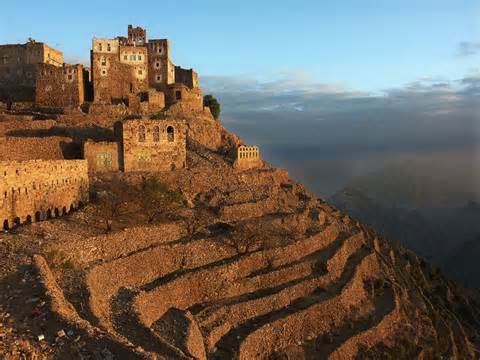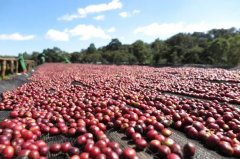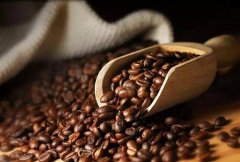The basic knowledge and Flavor description of the producing area of Cauca in Colombia introduction to the COE of Zhuoyuo Cup in Cauca Province
Introduction to the basic knowledge and Flavor description of Columbia Cauca Cup

Brief introduction of Origin:
Cauca province, Cauca department, the name comes from the Cauca River, Cauca River. Located in southwestern Colombia, it is an important producing area of Colombian boutique coffee together with Narino Department and Huila Department.
Cauca province is a certified coffee producing area in Colombia, with an average elevation of 1758m and a maximum elevation of 2100m. The topography, precipitation, temperature and volcanic soil of the area prepare suitable conditions for the growth of coffee.
The biggest difference in climate between Cauca and other producing areas is probably the relatively large temperature difference, with a daily average temperature of 11 ℃ and a daytime average temperature of 18 ℃. The temperature difference between day and night is an important factor in quality coffee. Low night temperatures and relatively higher elevations slow down the growth of coffee, allowing coffee seeds and beans to more fully absorb the nutrients of coffee fruits, as well as better acidity and commendable special sweetness of Coca Coffee.
The Cauca producing area of Colombia is about 1500-2100 meters above sea level. The changeable mountain terrain and climate, slow coffee production but also created this rich flavor, balanced flavor of Colombian coffee.
The producing area is surrounded by high mountains, which block the airflow and water vapor from the Pacific Ocean and trade winds from the south, thus maintaining a stable climate. Near the equator, there is plenty of sunshine. The stable climate and sufficient sunshine provide a guarantee for the stability of coffee quality.
In accordance with the fine tradition of Colombia, Coca Coffee is picked manually and washed. In addition, in order to pursue good disease resistance and higher yield, many coffee producing areas have updated the old varieties of coffee into new varieties, Cauca is rare to Katula Caturra species, in addition to tin card typica and bourbon Bourbon ancient species.
Cauca is one of the most popular producing areas of the COE Cup, but it is not as well-known as other provinces and regions, so there have been bidding events such as the Cauca Best Cup Cup since 2014, jointly organized by well-known American traders and local exporters and the Coffee Association of Colombia. The first Coca Zhuoyue Cup received about 200 samples in 2014, compared with more than twice the number in 2015. About 500 small farmers will compete for the competition, and the organizers will select the top 30 from more than 500 samples. The top 12 will be selected by the international jury cup, and raw bean sellers and bakers from all over the world will bid on the last day of the event.
Competitions like the Cauca Cup are actually helpful. It not only increases the income of small farmers, but also has the opportunity to improve their living conditions, but also makes them more willing to invest and improve their coffee production to produce higher quality coffee.
Suggestion on brewing parameters of hand-made Colombian Coca Coffee
Hand-washed Colombian Coca Coffee beans. 15g powder, medium fineness grinding (sugar size), v60 filter cup, 88-89 degrees water temperature, 30g water injection for the first time, steaming for 30 seconds, water injection to 105g water cut off, wait for the water volume of powder bed to reach half, then water injection, slow and uniform water injection until 225g water, finally shake a filter cup to increase extraction, the ratio of water to powder is 1:15, and the extraction time is 2:04.
Columbia Excellence Cup introduction:
The full name of COE is Cup of Excellence, which translates into Outstanding Cup, extraordinary Cup or extraordinary Cup in Chinese. Every year, the organizer ACE (Alliance For Coffee Excellence) picks out thousands of coffees from member States, selects a batch of high-quality coffee through domestic cup test review, and then submits the selected coffee to the top 10 by internationally recognized cup test review, and these 10 lucky coffees will be auctioned online around the world to get a good price. It takes about three weeks from the initial domestic selection to the international cup to the final auction, but it can completely change the life of a coffee farm and put them on the international stage.
At present, the largest number of coffee-producing countries in Central and South America are COE members: Brazil, Guatemala, Nicaragua, El Salvador, Colombia, Costa Rica, Honduras and Mexico. Only Rwanda and Burundi come from Africa. Brazil and Colombia are among the top coffee producing countries in the world, so there are two COE competitions each year.
Although Cauca is one of the most popular producing areas of the COE Cup, it is not as well-known as other provinces and regions, so there have been bidding events such as the Cauca Best Cup Cup since 2014, jointly organized by well-known American traders, local exporters and the Coffee Association of Colombia. The first Coca Zhuoyue Cup received about 200 samples in 2014, compared with more than twice the number in 2015. About 500 small farmers will compete for the competition, and the organizers will select the top 30 from more than 500 samples. The top 12 will be selected by the international jury cup, and raw bean sellers and bakers from all over the world will bid on the last day of the event.
Competitions like the Cauca Cup are actually helpful. It not only increases the income of small farmers, but also has the opportunity to improve their living conditions, but also makes them more willing to invest and improve their coffee production to produce higher quality coffee.
The main taste features of Coca Coffee are reflected in its wonderful acidity and beautiful sweetness, coupled with the typical mild taste of Colombia, which makes the coffee in the area a competitive target for many buyers. High-quality Coca Coffee usually shows rich floral aroma, high acidity and pleasant sweetness. this coffee is well balanced, sour, fragrant, bitter, sweet and mellow.
Full-bodied aroma with a hint of chocolate nut flavor, after cooking, the fragrance is still compelling. The taste is mellow, followed by a hint of chocolate-like bitterness, which turns sweet after an instant. This is followed by ripe acidity, with a bit of tropical fruit flavor, followed by a sweetness on both sides of the upper and lower jaw, quite smooth, medium mellow, pure, mild and well-balanced.
Important Notice :
前街咖啡 FrontStreet Coffee has moved to new addredd:
FrontStreet Coffee Address: 315,Donghua East Road,GuangZhou
Tel:020 38364473
- Prev

The difference of Red, Green and Blue Standard of Rosa Coffee Bean varieties in Panamanian Jade Manor
What is the red mark, green mark, blue mark of Panamanian Jade Manor? Flavor trend and hand-brewing recommended geisha coffee beans Geisha, once ranked by Forbes as one of the world's top 10 most expensive coffee, sounds like "geisha" in Japanese, hence the nickname. The rise of geisha coffee beans is undoubtedly the fine coffee of the millennium.
- Next

Introduction of taste, flavor and aroma trend in Huaguoshan area of Yunnan Province
Yunnan Huaguoshan production area introduces the taste flavor and aroma to the country: China altitude: 1200 meters production area: Yunnan baking degree: moderate baking treatment: washing the main producing area small grain coffee is suitable to grow in the mountain area of 8001800 meters above sea level. If the altitude is too high, the taste is sour, if too low, the taste is bitter. Small grains of coffee are mostly planted in dry and hot valleys about 1100 meters above sea level, so they are sour.
Related
- Detailed explanation of Jadeite planting Land in Panamanian Jadeite Manor introduction to the grading system of Jadeite competitive bidding, Red bid, Green bid and Rose Summer
- Story of Coffee planting in Brenka region of Costa Rica Stonehenge Manor anaerobic heavy honey treatment of flavor mouth
- What's on the barrel of Blue Mountain Coffee beans?
- Can American coffee also pull flowers? How to use hot American style to pull out a good-looking pattern?
- Can you make a cold extract with coffee beans? What is the right proportion for cold-extracted coffee formula?
- Indonesian PWN Gold Mandrine Coffee Origin Features Flavor How to Chong? Mandolin coffee is American.
- A brief introduction to the flavor characteristics of Brazilian yellow bourbon coffee beans
- What is the effect of different water quality on the flavor of cold-extracted coffee? What kind of water is best for brewing coffee?
- Why do you think of Rose Summer whenever you mention Panamanian coffee?
- Introduction to the characteristics of authentic blue mountain coffee bean producing areas? What is the CIB Coffee Authority in Jamaica?

